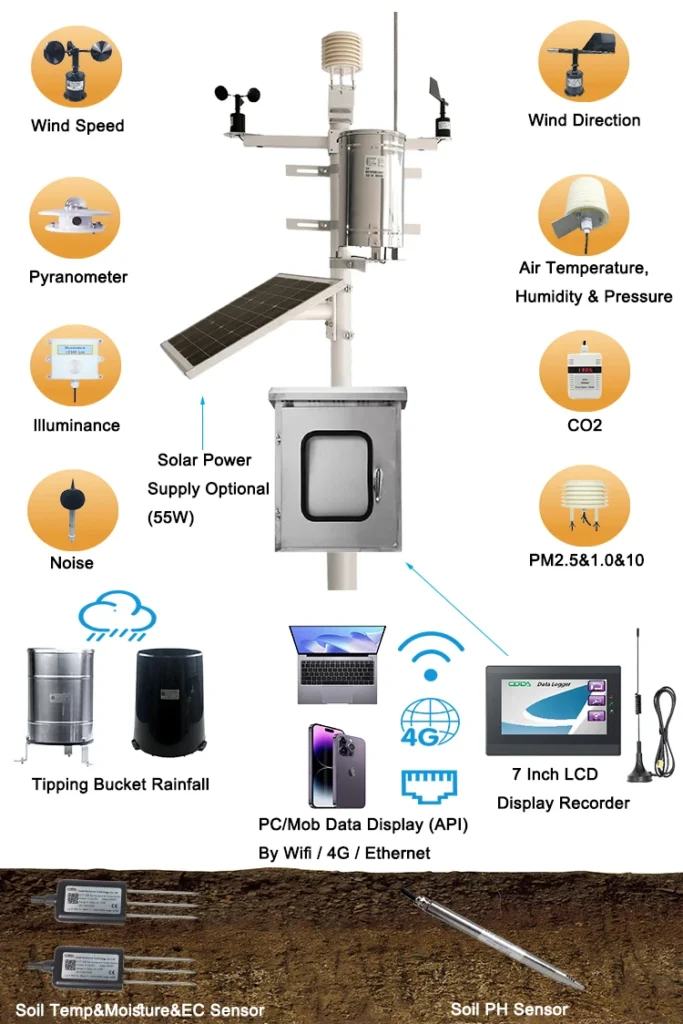How does a weather stations sensors work?
A weather station sensor is a spot to watch instruments and sensors. People use these tools to measure and track the outdoor weather.
These home weather station give weather enthusiasts important data. This data helps us understand the environment and predict the weather. It has many uses in various fields.
Weather stations use special sensors to measure the factors that help track digital weather conditions trends.
Devices often check measure temperature, humidity, and air pressure. They also check how fast the wind is blowing and which way it is going. Some can track rainfall. Some have light sensors to check the environment.
Some stations have outdoor weather sensors that check how wet the soil is. More advanced stations have all these tools and even more.
Sensors collect data at set times. This is the first step in the process. The information is stored at the station or sent to the main databases.
In many cases, advanced systems use digital sensors. These sensors help us collect data in real time. We can send data through radio waves, satellites, or cell networks. The method we use depends on the design and location of the station.
Meteorologists collect data and analyze it to make hourly weather reports and forecasts. These reports are useful in many ways. They can be used in farming, flying, city planning, and managing disasters. Meteorologists use this data to make real-time forecasts and to study bigger patterns.
professional weather station sensors instrumentation usually contains elements:
Thermometer — It tells us how hot or cold the air is.
Hygrometer: outdoor temperature and humidity Barometer – it measures the barometric pressure rainfall.
Anemometer: A device that measures how fast the wind blows and which way it is going.
Rain gauge : Rainfall (or snow)
Radiation sensor :Solar radiation or other types of radiation
Some stations use sensors, radar, or lidar. These tools can measure key features of the atmosphere from far away. They act as tools to sense things from far away.
These Automated Data Collection Supports
Some stations connect with computers and have online status like a web.
Forecast: Filled with feedback from weather data, is a simulation of atmospheric happening forecasted future states.
The station has log books that record the weather. These are important for local climate studies and tracking trends over the years.
Weather observations can help with this technology. They help track clouds, visibility, and rain.
Wifi weather stations vary in size and purpose. Some are small tools that you can hold in your hand. They are used for research. Some are big, fixed devices that watch the weather all the time.
These stations give us important data for measurement. This data is essential for safety and preparedness in different environments. It is precise and reliable.
In conclusion, wireless weather stations are important tools. They track local weather changes. They give useful information for farming, transportation, research, climate studies, and daily forecasts.
Their role in helping us understand the environment is important. It helps us manage short-term weather and long-term climate trends.
